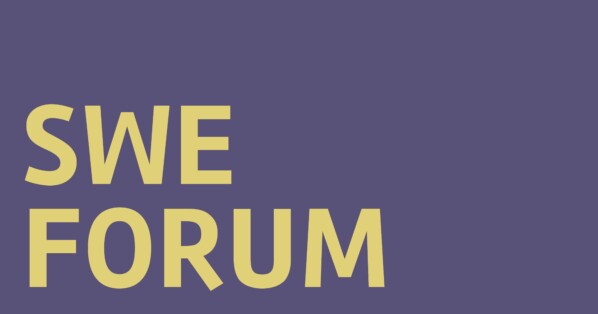We might call it unconscious bias’ evil cousin. It’s dubbed “gender sidelining.” Research shows this type of insidious discriminatory treatment involves subtle actions with no legal consequences. Examples include male bosses who minimize women’s accomplishments, interrupt when women talk, create barriers to opportunities and mentorships, omit women from high-impact project teams, and subject women to harsher scrutiny than their male colleagues.
Indeed, gender sidelining encompasses “the universe of subtle ways that obstacles and hindrances might impact a woman’s career,” said Jessica Fink, J.D., the Clara Shortridge Foltz Professor of Law at California Western School of Law, who used the term in her Stanford Law and Policy Review article, “Gender Sidelining and the Problem of Unactionable Discrimination” (2018).

“It’s all the nonlegally actionable stuff that can get in the way of a woman’s advancement — some might be intentional obstacles, some may be unintentional,” said Fink, who earned her undergraduate degree in political science from the University of Michigan at Ann Arbor and her law degree from Harvard. “Once you start looking for it [gender sidelining/downplaying women’s accomplishments], it’s everywhere in virtually every working environment,” she said.
Fink said she initially downplayed the idea that academic research could be a platform for her interest in the media and/or others downplaying women’s achievements. She had noticed that several newspapers’ front-page stories about Hillary Clinton’s nomination as the first female major-party candidate for president were accompanied by photos of Bill Clinton, as well as the controversy surrounding media coverage of U.S. Olympic swimmer Katie Ledecky’s new world record and gold-medal accomplishments in the 2016 Olympics. In one newspaper, Ledecky’s wins were printed as a subheadline beneath a primary, large headline about Michael Phelps’ three-way tie for a silver medal.
But a colleague suggested Fink’s law school faculty peers talk about the issue at an informal “cocktail-napkin discussion.” Fink felt encouraged when her peers said these examples of sidelining might correspond with how women are treated in other types of working environments. In the sciences, for example, female scientists not only have sometimes failed to receive proper credit for their work, but also have been held to a different — often higher — standard than their male peers. In the arts, female artists remain underrepresented in terms of having their work showcased by major museums, while women in the entertainment industry face different expectations than men in terms of appearance and career longevity.
And, in the corporate world, female workers often have more-limited access to leaders and opportunities for growth; are frequently evaluated differently than their male peers; and report finding their ideas being overlooked, ignored, or usurped. In fact, a lingo has even sprouted up to identify the problem, with phrases such as women being “man-terrupted” while they’re talking at a meeting, and having an idea “bro-priated” (“bro” being shorthand for men).
What can be done?
“We need to really take steps to strengthen the relationship between men and women at work,” said Fink, who litigated sexual harassment and wage-and-hour discrimination at a major law firm in Chicago prior to her academic career. “I think simply recognizing this is a problem can go a really long way,” Fink said. “It’s not going to be a magic bullet, but it’s an important first step. After all, decision-makers know they’ll have to justify their decisions, and C-suite management is comprised primarily of white men.”
Women can fight back against having their ideas sidelined if they and their female colleagues agree that, if one of the women mentions a good idea, the rest of the women will repeat it and give credit in the meeting. Fink said it’s important to realize that evil intent is rarely the problem.
Nor does Fink believe the workplace slights should be legally actionable. “It’s far too subtle of a problem,” she said. “The law is not a precise tool to deal with issues like this. A lot of these scenarios are far too nuanced to fall into that bucket. Civil rights law — specifically, Title VII, which prevents gender discrimination — wasn’t intended to address every snub you can imagine.”
Another step would be to ensure that women are hired for and promoted to leadership positions, both in the workplace and in academia, Fink said. She noted that “placing women into positions of authority counters entrenched stereotypes regarding whether and how female employees can lead.”
This countering of stereotypes can start even before women hit the workforce. “Research shows that students who had the greatest number of female professors during their first year of college showed the greatest decrease in implicit gender bias,” she said.
But there’s a hurdle. “The pipeline [to C-suite positions] isn’t rich with women,” she said. “A lot of employers are scared to tackle those sorts of questions. If they don’t examine the questions, then they won’t have to deal with the answers, which they might not like.”
Brian Rubineau, Ph.D., assistant professor of organizational behavior at McGill University’s Desautels Faculty of Management in Montreal, said in an earlier interview that changing the internal workings of an organization is extremely difficult because solutions must be multilayered. “Trying to focus on one (issue) at a time results in very little progress,” said Dr. Rubineau, who has studied workplace inequality for 13 years.
Yet Fink said women can research and ask about a company’s culture to get indications of whether gender sidelining might be a concern. “What are the chances of me having the greatest opportunities to succeed within this company? How many women are in the company? In leadership? What are the corporate policies? What’s the family leave policy?” she said. “These policies and situations aren’t directly related to sidelining, but they may tell you how much input women are having or how much issues of concern to women are being taken into account.”
Asking new and different questions
Glass ceiling patterns can also be the result of a company’s recruitment and hiring processes.
Researchers Roberto M. Fernandez, Ph.D., and Santiago Campero, Ph.D. (2017), studied data of people who applied online for jobs at 441 small and medium-sized high-tech firms. At the time, Dr. Fernandez was Dr. Campero’s doctoral supervisor at MIT. Dr. Campero earned his Ph.D. in management with a subspecialty in economic sociology, and also has a B.S. in engineering from Universidad Iberoamericana in Mexico City.

“Both of us had a longstanding interest in gender inequality,” Dr. Campero said in a telephone interview. “The high-tech industry is an important source of job creation and where underrepresentation of women is a longstanding issue that has generated significant concern among academics, business leaders, and policymakers.”
Dr. Fernandez is the William F. Pounds Professor in Management and a professor of organization studies at the MIT Sloan School of Management. He also serves as the co-director of the economic sociology Ph.D. program. Dr. Campero is an assistant professor at the Centre for Industrial Relations and Human Resources at the University of Toronto.
In contrast to past studies of relatively mature, single-firm hierarchies, Drs. Fernandez and Campero studied the sample of small and medium-sized high-tech firms because they have relatively flat organizational structures. They focused on examining the sources of the glass ceiling, or the tendency for women to become increasingly scarce at higher organizational levels, in the high-tech sector. Their sample of small and medium-sized firms provided a conservative test for studying the glass ceiling, the two authors said.
They focused on the hiring process, given that research on the glass ceiling has focused almost exclusively on internal promotions. Though the study found evidence that the glass ceiling is produced by both internal and external hiring processes, it found that a company’s recruitment and outreach policies were the real key to obtaining greater gender parity.
“Much of the research that’s tried to explain the glass ceiling has focused on internal promotion barriers and the fact that women might face barriers in promotions,” Dr. Campero said.
Yet Drs. Fernandez and Campero sought to ask a new and different question: Could the glass ceiling also come from external hiring?
“We show that, if you look at who gets hired in these companies at different levels, you get this same glass ceiling pattern — women are less and less prevalent as you move up the hierarchy,” Dr. Campero said. “Even though internal promotional barriers may be one factor, external hiring can also lead to the same pattern. That’s important because, potentially, the people making external hiring decisions or the processes through which they’re made are different than internal promotions. It’s a different place to look.”
Gender-equitable candidate pools
The findings suggest that outreach efforts aimed at encouraging female candidates for senior positions should be a high priority in addressing the glass ceiling. Though the research didn’t offer specific suggestions for outreach, Dr. Campero said it could involve companies better communicating with women candidates and networking with women’s professional groups and women’s meetings and organizations.
The study revealed that policies targeting gender biases in internal promotion would be insufficient in addressing the problem, given the influence of external recruitment processes in filling many high-level positions.
In contrast with policies aimed at ameliorating promotion disparities — for example, changing supervisors’ gender-biased internal assessment processes — external recruitment and hiring processes are often controlled by human resources professionals charged with reaching beyond the organizational boundary.
At a minimum, the authors said their findings suggest that policy efforts specifically aimed at gender disparities in external recruitment are needed to make progress in overcoming the glass ceiling. Moreover, the researchers’ data analyses and “what if” simulations of the processes at work in the external hiring interface provided further guidance for designing policies to address the glass ceiling.
“Recruitment policies aimed at producing more gender-equitable candidate pools for jobs at higher levels of the hierarchy are likely to pay the biggest dividends in ameliorating the glass ceiling,” they said. They realized early on that a major reason for a lack of understanding of the glass ceiling had to do with obtaining adequate data.
“In our analyses of hiring processes at these firms, we tried to account for how much of the glass ceiling is coming from disparities in screening — in who the firms invite for interviews or who they give job offers to, versus how much comes from the composition of their initial applicant pools,” Dr. Campero said.
“Most of the disparity is coming from the increasing scarcity of women candidates at higher organizational levels,” he said. “It suggests that, in order to remediate the glass ceiling, one of the most impactful things firms can do is to try to put in place policies that will increase the number of women candidates.”
“You tend to see a dropoff in the share of female applicants for the most senior positions, which makes it all the more important to have outreach efforts,” Dr. Campero said, adding that he was surprised to see the influence that the initial composition of the applicant pools had on producing the glass ceiling.
“I think a lot of the conversation around the glass ceiling often focuses on implicit bias — and that may play a role in some of these hiring decisions,” he said. “We do find, especially for roles in engineering or IT, disparities in screening that could potentially be the result of implicit bias. We’re not saying that may not be important. Even though the conversation is very focused just on this issue of implicit bias and how it may affect hiring decisions, the initial composition of the applicant pool and the extent to which women may not be applying to some of these positions is an even more influential lever.”
To separate the internal and external barriers to women’s achievement within the organizational hierarchy, the researchers had to properly identify the pool of both internal and external candidates who were competing for job openings across levels of the organization.
For each position they studied, they obtained information on who was competing for the job, who made it through each stage of the process, and who was eventually hired. With this information, they were able to assess the initial gender composition of applicant pools, and how this gender composition changed across various stages of the hiring process. They then conducted a series of “what if” simulations.
On the demand-side, they examined the impact of men and women advancing through the hiring process at equal rates (i.e., unbiased screening). In this scenario, the pattern (i.e., fewer women at higher levels) is alleviated, but only slightly. To assess the influence of supply-side factors, they examined the impact of attributing to applicant pools at each level the same proportion of females as were present in the firm’s overall pool of job candidates.
“We said, ‘Instead of having the pattern where the applicant pool has fewer women as you go up the hierarchy, let’s assume you have the same number of females overall and that they are distributed at the same percentage at each level — eliminating the downward sloping pattern of female candidates becoming scarcer at higher levels while keeping the total number of women candidates constant,’” Dr. Campero said.
When they considered the impact of distributing women candidates across levels in equal proportions, they found that such a change would have a significant impact on the glass ceiling.
In essence, this suggests that the fact that women candidates tend to be concentrated in lower-level vacancies is a large driver of the glass ceiling.
It’s important to note that the study encompassed a range of functions and roles, but gave special focus to IT/engineering jobs, given the particularly salient concerns about gender bias in these roles. IT/engineering jobs were the one place where gender disparities in screening were the most disadvantageous to women, consistent with the idea that women face larger barriers in accessing these roles. But, even in IT/engineering, achieving a greater female representation among job candidates for senior-level positions emerged as the biggest lever to address the glass ceiling, Dr. Campero said.
Toward effective solutions
Prior research has shown that multiple factors contribute to the lack of female candidates to jobs in engineering. These can include, for example, the impact of cultural associations of engineering with masculinity, which can discourage women from forming high aspirations in these fields.
The findings suggested that efforts aimed at increasing the supply of female candidates — both by individual firms and industrywide — may pay greater dividends than would efforts to address gender bias in screening.
“It is worth considering what would happen if the overall supply of female candidates were to increase, for example, as a result of outreach policies designed to attract more women to the high-tech sector overall, or to engineering jobs in particular,” Dr. Campero said.
That’s especially important for newer, rapidly growing high-tech organizations. The study was the first to document a glass ceiling being formed through the early influx of new personnel. “These small firms might not yet have large pools of internal candidates to stoke an internal glass ceiling pattern, but their rapid growth generates many vacancies and promotion opportunities for candidates who are likely to be external,” the research said.
“That these companies were resorting to large-scale recruiting over the internet suggests a desire to expand their potential talent pool beyond their current workforce and direct network ties,” the research found.
“For young, rapidly growing high-tech firms, focusing on external recruitment and hiring processes is likely to be the most effective way of tackling the glass ceiling. In this respect, the data analyses and ‘what if’ simulations provide further guidance for designing policy efforts to address the glass ceiling.”
“Showing the supply side is so impactful,” Dr. Campero said. “It points to the importance of investigating what can be done to encourage women to seek these higher-level positions.
“Although there are likely multiple factors that contribute to the application patterns we uncovered, making progress in elucidating them should be a high priority for those trying to address the glass ceiling in the high-tech sector.”
References
Fernandez, R. and S. Campero (2017). Gender Sorting and the Glass Ceiling in High-Tech Firms. ILR Review 70(1): 73–104.
Fink, J. (2018). Gender Sidelining and the Problem of Unactionable Discrimination. Stanford Law & Policy Review 29(1): 57–106.







